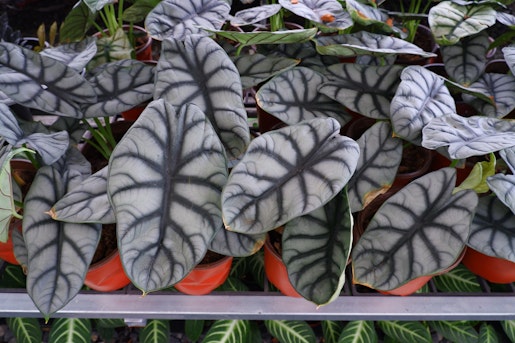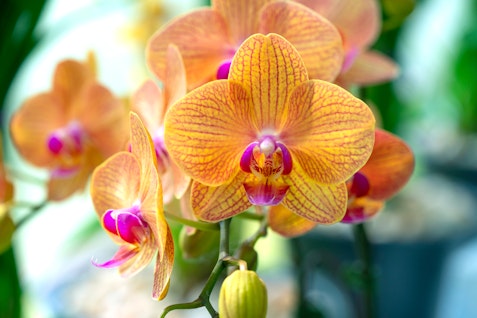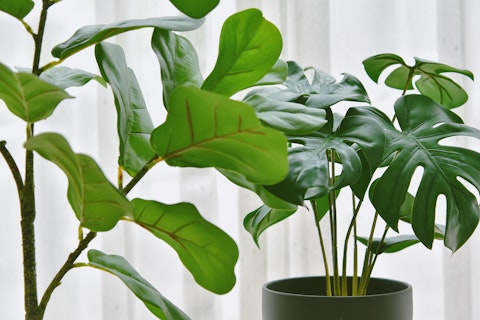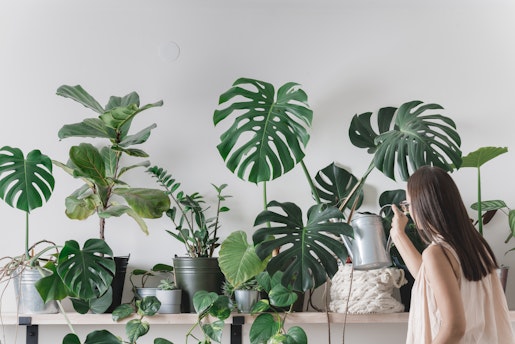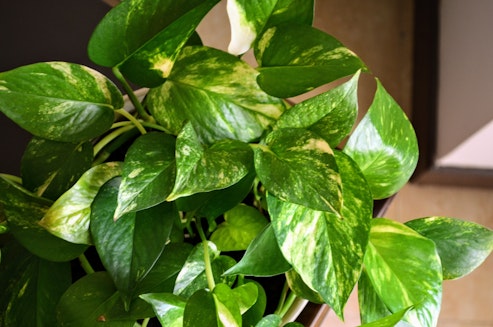
- Home
- Pet-Friendly Plants: A Guide to Pet-Safe Greenery
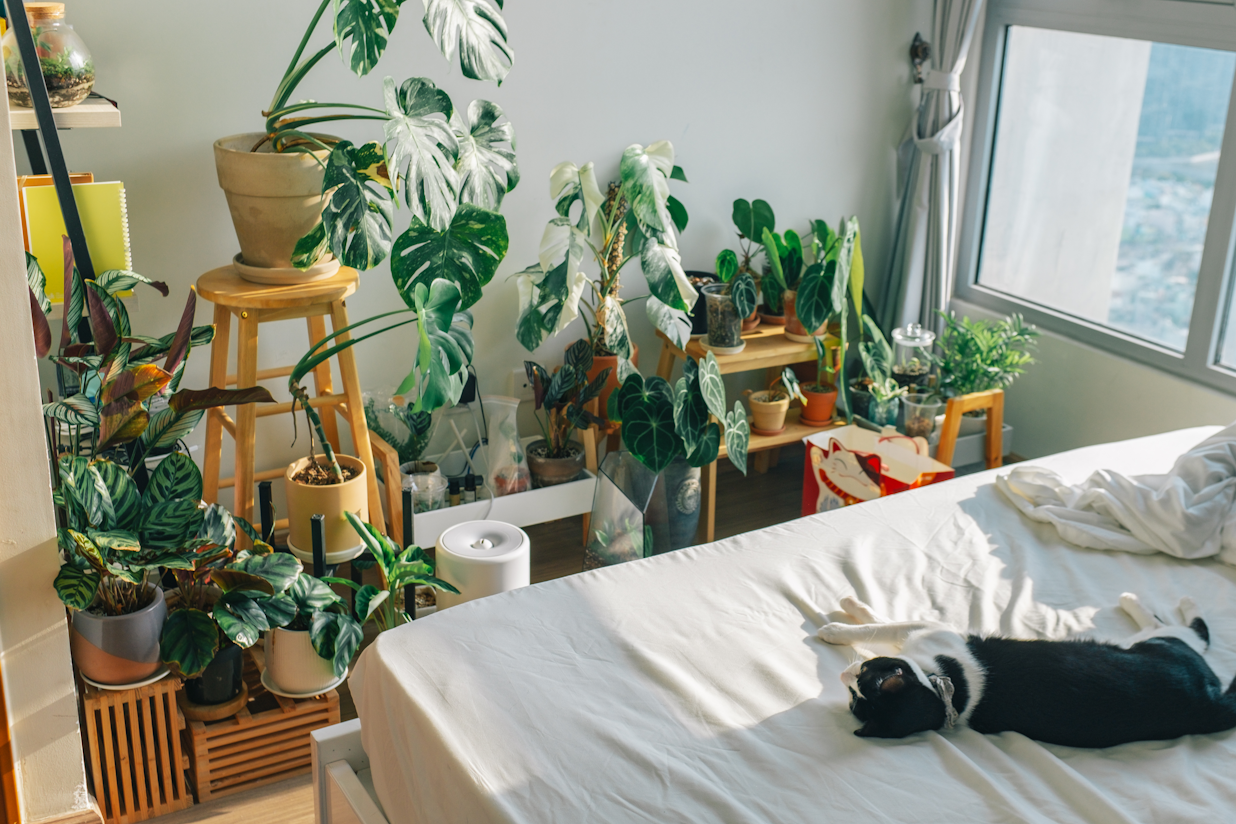
There are a number of links between having elements of nature inside the home, and benefits to emotional and physical health. Evidence suggests that having natural, green spaces in your home (like plants) can help to improve your mood, help you relax, and do things like reduce your heart rate and blood pressure. But did you know that the same is true of cats and dogs! That’s right, having furry friends sleeping at the foot of your bed also helps to reduce your heart rate and blood pressure, helps you relax and benefits your emotional health. So it goes without saying that the solution to the pressures of modern life is, of course, to have a home stuffed to the brim with plants and cats and dogs, until you struggle to move from one room to the next for pet hair and foliage in your way, until you’re so relaxed that even the most stressful situations wouldn’t bother you one bit.
Okay… so, maybe I’m exaggerating a little. The truth is, there is a definite link between lovers of animals and lovers of plants, and quite often the two are one and the same. But unfortunately, a lot of plants and animals don’t mix. But we believe that shouldn’t stop you! There is a plethora of pet friendly plants that you can have in your home, and this guide intends to help you find them, so you can have your fix of lovely plants and precious fluffy creatures at the same time!
What does pet safe mean?
Pet safe plants are plants that pose little to no threat to an animal if come into contact with or consumed. It is important to note one or two things before getting into the thick of this blog post. Firstly, there is a difference between poisonous plants and toxic plants, however, in my opinion, it is of little importance or consequence to the keeping of pet safe plants, so I have used the two terms interchangeably. The bottom line is that whether poisonous or toxic, these plants are unsafe.
Secondly, there are different levels of toxicity, and while some plants are mildly irritant and would just annoy your pet for a few hours, others would send them to the vet, and risk serious harm or even death. It is important to know which is which if you plan on taking any risk at all, but it is always recommended to avoid plants at any level of ‘unsafe’, just to be sure.
Thirdly, and finally, some of us are lucky enough to have pets that aren’t interested in plants at all, and most animals have evolved efficiently enough to know what not to eat by smell or sight alone. But this is by no means absolutely true for all animals, and any animal can one day decide to take a chomp out of a leaf for absolutely no reason at all. Animals are autonomous and by their very nature unpredictable. Any risk you decide to take should be done with the maximum amount of care and knowledge, just to be sure.
Houseplants that are Safe for Pets.
Below is a short list of popular plants that are safe for pets, that is if come into contact with or consumed. Truthfully, even pet safe plants can cause animals to vomit, not as a result of toxic compounds, but due to the fact that some pets are unable to digest certain plant matter as they lack the appropriate enzymes to break it down in the stomach. If you are aware of what plants are safe and unsafe, then if a pet is regurgitating plant matter, you can be sure it is just a digestive issue and nothing more.
Chlorophytum - Chlorophytum are safe for pets to consume. Chlorophytum is a genus most famous for the species Chlorophytum comosum, known as a ‘Spider Plant’. These easy, fast growing plants are popular amongst pet owners, as they are a lot of fun for cats, as quite often they like to play with their cascading, grassy leaves. Be warned, for cats these plants have mild psychoactive effects and can send your meowers a little loopy!
Maranta - The Maranta genus is safe for pets. Also known as ‘Prayer Plants’, they are a stunning and dynamic plant that grows fast and blooms fairly reliably. The various species and cultivars are prized for their bright and colourful foliage.
Calathea - Calathea (now Goeppertia) are safe for pets and are closely related to Maranta, and are equally prized for their fast growth and interesting colours, but famously produce much larger leaves. Be warned: Calathea are known for their difficulty to keep, and are definitely recommended for more experienced growers!
Palms - True palms are mostly non toxic to pets. These are great large space fillers that add a little bit of a tropical vibe to your space without endangering your pets! These include the grassy Chamaeadora elegans (Parlour palm), Howea forsteriana (Kentia Palm), Chrysalidocarpus lutescens (Areca palm), plants of the genus Phoenix (Date palms) and Cocos (Coconut palms). Note that true palms are only palms in the Arecaceae family, and lots of plants are called ‘palms’ commonly while not being true palms, or pet safe. In the next section, read the section named “False palms” for more information!
Orchids - All orchids are pet safe, and kept for their beautiful blooms that usually come around once a year. They do require a little bit of specialist knowledge, but not quite as much as the rumours would have you believe! They are a vast and diverse family of plants that come in lots of fascinating shapes, sizes and colours.
Hoya - Hoya are a pet-safe, resilient genus of colourful epiphytes that do not require specialist knowledge to keep. They are quickly growing in popularity due to the sheer aesthetic diversity of different species with similar care requirements.
Ferns - Ferns are a group of early plants that include a large number of different families of plants. All ferns are considered pet safe, this includes Platycerium bifurcatum (Staghorn Fern), Asplenium antiquum (Bird’s nest fern) and Nephrolepis exaltata (Boston Fern), among many others! It is worthy of note that some fern species produce sporangia underneath their leaves when wanting to reproduce. These sporangia are usually little brown, powdery bundles of spores: sometimes circular or long-form, and can sometimes be unsafe to ingest.
Gesneriads - Gesneriads are another family of plants that are entirely safe for pets! There are many popular Gesneriads, such as Streptocarpus ionanthus (African Violets) and the genus Aeschynanthus (Lipstick Plants). They are prized for their stunning and reliable blooms, and their ability to tolerate a wealth of different conditions.
Cactus - Cacti had no need to develop anti-mammal toxins, as they have been pretty good at keeping things away with their spikes! However, the spikes will still dislodge into curious critters skin, paws and noses if they get too close and can cause irritation and pain. Keep at your pets own risk! Some species of Cactus are less spikey than others: check out hanging cacti like Disocactus anguliger, Epiphyllum, Lepismium and Rhipsalis!
Pilea - Pilea peperomioides (Chinese Money Plant) is an incredibly popular houseplant, and is one of the highest recommended plants for pet owners, due to their incredible growth habits, fascinating aesthetic qualities and absolute lack of any toxic components!
Peperomia - Peperomia is a genus of oval-leaved plants that are entirely safe for pets. They have been kept for a long time and present a wealth of variety in terms of size, shape, colour and growth habits!
Acanthus - Acanthus are a family of pet-safe plants that are relatively small and prized for their interesting colours. They are great as a little gap filler or as a feature in a terrarium! The family includes Hypoestes (Polka-dot plants) Fittonia (Nerve plants) and Aphelandra (Zebra plants).
Bromeliads - Bromeliads are a family of plants that are slow growing, visually stunning epiphytes that grow a single flower over their entire lifetime. The flower is usually very large and colourful. They are easy to grow and require little maintenance, as well as being totally pet safe! This family includes Tillandsia (Air Plants) and Cryptanthus (Earth Star/Sword plant).
Succulents - Succulents are a complicated category of plants, as it is a term that unifies plants of like characteristics, but are not necessarily related or share genetic material. As a result, some succulents are pet safe and others aren’t. To account for this, I have included a short list of popular pet safe succulents below:
Succulents safe for pets:
- Aeonium (Black/Irish Rose)
- Pachyphytum (Moonstone)
- Lithops (Living Stone)
- Haworthia (Pearl Plant/Zebra Plant)
- Sedum (Stonecrops)
- Echeveria (Rosettes)
- Sempervivum (Houseleeks)
- Pleiospilos (Split-Rocks)
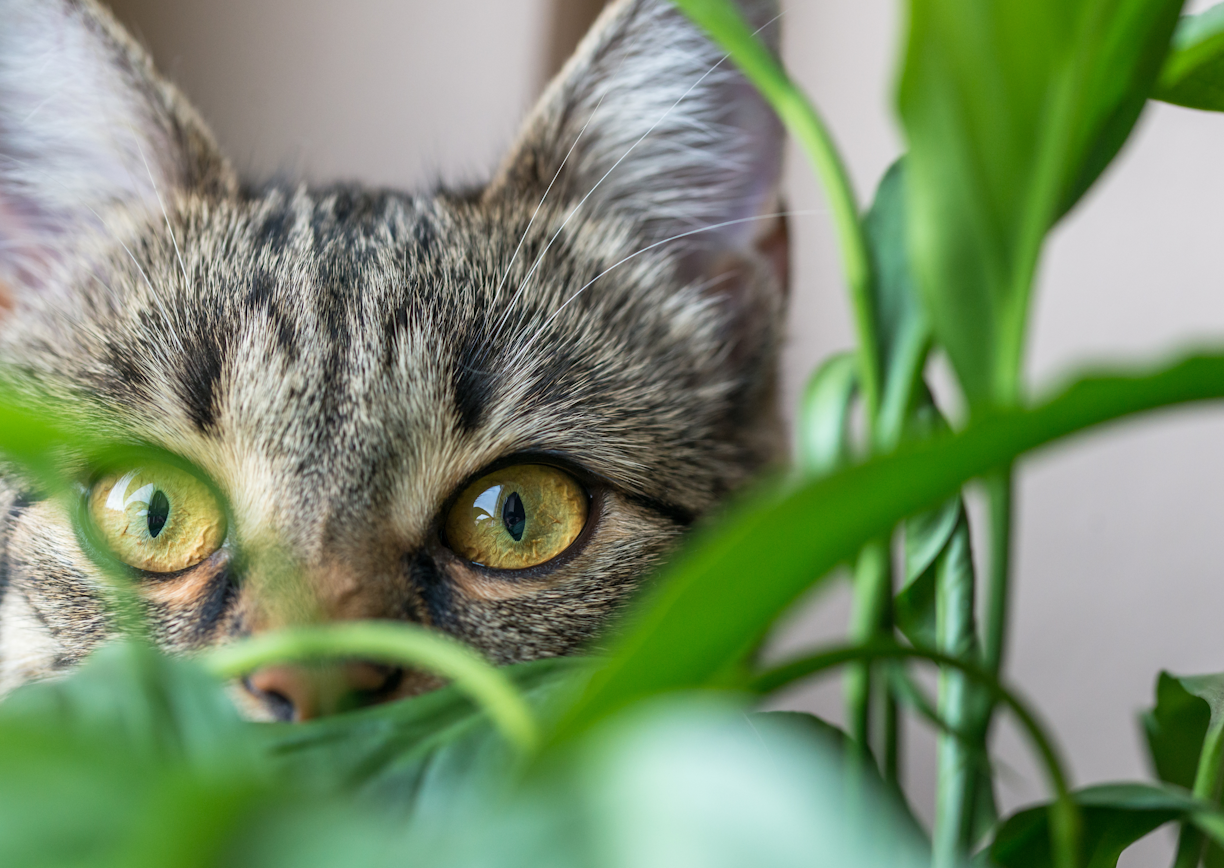
House Plants that are Harmful to Cats and Dogs
As mentioned before, there are many different types of toxicity, and some plants are more harmful than others. It is always the safest practice that produces the best environment for any animal, but there are solutions such as keeping plants in places that pets can’t reach that allow you to have these plants and pets safely!
Aroids - These are tropical plants in the family Araceae, that contain a compound called calcium oxalate in the sap. Calcium oxalate forms in needle-like crystals that pierce the lips, mouth, throat and stomach if consumed, it is very uncomfortable for humans or animals if consumed and can result in lots of very violent symptoms. While it is unlikely to lead to death it is recommended to consult a vet if you suspect your pet has eaten any Araceae plant. This family includes: Monstera, Philodendron, Rhaphidophora, Zamioculcas (ZZ), Spathiphyllum (Peace Lillies), Anthurium (Flamingo Plant), Alocasia (Elephant Ear), Dieffenbachia (Dumb Caine), Syngonium (Arrowhead Plant), Aglaonema (Chinese Evergreen), Epipremnum (Pothos), Scindapsus (Satin Plant) and Thaumatophyllum, all of which are unsafe for pets.
Asparagus - This is an important genus to note, as often the popular Asparagus plants are mistaken for ferns. That is Asparagus setaceus and Asparagus densiflorus (Asparagus ferns), which are very popular and attractive houseplants. While ferns are all pet safe, Asparagus are flowering plants and not true ferns, despite their common names. They contain poisonous saponins that risk your pet’s health.
Strelitzia - Strelizia nicolai (Bird of Paradise) is a large leafed, standing plant that is famous for its bird-esque, colourful flowers. It contains unsafe to digest saponins in its sap.
Tradescantia - Tradescantia are a genus of colourful flowering plants popular for their fast growth and easy propagation. The stem contains saponin which leads to irritating digestive issues. Popular plants include Tradescantia zebrina (Wandering dude/Inchplant) and Tradescantia pallida (Purple Heart).
Ficus - This is a genus of plants that are associated closely with figs, as edible figs grow from plants of this genus. They contain a variety of chemical components called saponins that lead to digestive problems and cause immense digestive discomfort in animals like cats and dogs. Common species include: Ficus elastica (Rubber plant), Ficus benjamina (Weeping Fig) and Ficus lyrata (Fiddle Leaf Fig).
Begonia - This is a diverse genus of plants that are prized for their huge variety of leaf shapes and colours as well as delicate flowers. The sap of Begonias contains oxalates, which cause intense irritation if consumed and can form oxalic acid in the stomach, which is a potent irritant.
Dracaena - This is a wide and diverse genus of tropical and sub-tropical, grassy plants that are loved for their unique colours and leaf shapes. They all contain a number of saponins that are very irritant to animal digestive systems and can cause severe pain and discomfort. Plants in this genus include: Dracaena marginata (Dragon Tree), Dracaena fragrans (Corn Plant), Dracaena sanderiana (Lucky Bamboo) and Sanseveria syn/ssp. (Snake Plants).
Euphorbia - This group is intended to represent both the Euphorbia genus and the family Euphorbiaceae, as all plants in the family are toxic to cats and dogs. The sap of Euphorbia contains latex, which is a skin, eye, ear and digestive irritant and can cause serious discomfort for your animal. Plants in this family include: Euphorbia trigona (Milk Tree), Euphorbia lactea (Coral Cactus), Euphorbia milii (Crown of Thorns), Euphorbia pulcherrima (Poinsettia) and in the same family: Codiaeum variegatum (Croton).
Lilies - Although many plants are named ‘lilies’, it is specifically plants of the Lilium genus or Liliaceae family that are fatally toxic to animals and should be kept away from pets at all times. Their sap, pollen, leaves, flowers, stem and even the water/soil they sit in can become contaminated and would cause fatal kidney failure in as little as three days. The most likely place you will encounter lilies is in bunches of cut flowers, but some lilies are kept as houseplants too. Keep your eyes out for: Lilium (True Lilies), Convallaria majalis (Lily of the Valley) and Tulipa (Tulips), which are the most common.
Amaryllis - These are a large family of bulb-growing, flowering plants called the Amaryllidaceae family, and includes poplar cut flowers and houseplants alike. These plants contain a compound called lycorine, which when ingested can cause illness anywhere from mild, to severe, to fatal, so it is best avoided. Plants include: Hippeastrum, Allium (Allium lillies/Garlic/Onion), Narcissus (Daffodils), Galanthus (Snowdrop) and Clivia.
False Palms - While a seemingly non-specific category, it is important to consider various species of plant that are commonly referred to as ‘palms’, without actually being them. All true palm trees are pet safe, however, some of the plants referred to as palms are not. They vary in degrees from mildly toxic to lethally toxic, so it is important to find a distinction. The common misnamed palms that are unsafe are: plants in the Cycadaceae and Zamiaceae families (Sago palms), of which all parts are lethally toxic to all mammals.
Heptapleurum (Schefflera) - Heptapleurum (Umbrella trees) are a genus of trees that are prized for their unique form and leaf shape. They come in a number of sizes and colours and are unfortunately unsafe for pets!
Succulents - Again, succulents are a complicated category of plants, as it is a term that unifies plants of like characteristics, but are not necessarily related or share genetic material. As a result, some succulents are pet safe and others aren’t. To account for this, I have included a short list of popular unsafe succulents below:
Succulents unsafe for pets:
- Crassula (Jade Plant)
- Aloe
- Agave (Century plant)
- Kalanchoe (Widow’s Thrill)
- Lophophora (Pyote)
- Cotyledon (Bear’s Claw)
- Curio (String of Pearls/Dolphins)
- Adenium (Desert Rose)
How Do I Know if a Plant is Pet Safe?
Visual inspection alone often will not tell you whether a plant is toxic or not. There is no single unifying compound that is present in all toxic plants that makes them alike, so the understanding of plant toxicity is better known on a ‘plant-by-plant’ basis. The only real way to intuitively decide whether a plant is toxic is by association. Often, plants that are in the same family have the same compounds in them, and if you know one plant is toxic, then you can safely assume that its relatives are too. However, this is by no means a rule of thumb, and plants can evolve anti-animal compounds early or late in their evolutionary history. Chlorophytum and Dracaena share a family (Asparagaceae) for example, but Dracaena are toxic, and Chlorophytum are not. The best approach to take to being certain is to work with toxic until proven otherwise mindset, presuming that all plants are toxic until you have a clear answer to the contrary. This allows the maximum safety for your pet.
What are the signs a plant is poisoning my pet?
There are different signs of toxicity in pets. Some plants deliver instant discomfort to pets and can be linked immediately by cause and effect, but others take a little longer for symptoms to set in. We recommend that any sign of ingestion is treated seriously, and that a vet is consulted. Chances are the effects will be acute and not that serious, but it is certainly better to be safe than sorry. Look out for:
Teeth marks in leaves - Clear evidence of little bite holes in leaves or full bite marks and leaf sections missing. If nothing else, this can tell you exactly what plant your pet has chomped on if they seem unwell! Sometimes you will even find bits of chewed plant matter across your house.
Skin damage - Some plants are irritant if touched, or can simply cause allergic reactions in certain pets when brushed up against. Look for red, raw or swollen skin or patches of missing fur.
Swelling - Swelling around the lips, teeth, face, neck and lymph nodes can be a sign of toxicity.
Oral symptoms - Coughing, swelling, sneezing and drooling can all be symptoms of plant toxicity. These are usually heightened if your pet does any of these already!
Vomiting - Most toxic plants will cause vomiting. It is one of the most common symptoms. If your pet is vomiting and you suspect plant ingestion to be the cause, consult a vet immediately!
Energy - Being poisoned is exhausting, and makes your animal feel pretty rough. Sometimes they will be really lethargic, or extra noisy or demand excessive attention. Keep your eye out for a significant change in behaviour!
Digestive issues - Carnivorous pets digesting plant matter often results in rumbly tummies and messy poops. Sometimes these digestive issues can make it difficult for your pet to pass waste at all. Keep an eye out for any digestive problems.
Where do I get pet safe plants?
Check out our online store here where you can filter plants based on whether they’re pet safe or not. Otherwise, there are a wealth of resources online detailing whether plants are pet safe, often from very reputable sources. After decades of plant enthusiasts and animal enthusiasts coming together, people have gathered a pretty good idea as to what doesn’t mix. If ever you are in doubt about a plant you own, or wish to own, feel free to email our care page and we’ll get back to you when we can! Further, feel free to consult this page whenever you need to check. I have tried to include as many popular plants as I can so as to make this list as conclusive as possible!
Thanks for reading! Hopefully, from here, you’ll be able to move ahead with your plans to live alongside plants, cats and dogs alike, without risking the safety of your fluffy best friends!
Jonathan Davies
Jonny has worked at Root since May 2023. His love for plants was inherited initially from his grandparents and parents, but really took off once he moved into his own place, where he started picking up small plants and was fascinated by watching how they grow and change over time. Jonny has a degree in Archaeology and Classics from the University of Sheffield, and a masters in Egyptology from Swansea University, where he primarily focused on garden culture in the ancient world, which he has managed to extend to a PhD thesis in the University of Liverpool, where he has been able to combine his love for plants with his love for ancient language and culture. Jonny loves being in the natural spaces around North Wales and Cheshire where he used to go growing up, and often spends hours examining the plants and trees, and kicking up the leaf litter searching for mushrooms and insects. He is fascinated most by plant biology, taxonomy and learning about ecosystems and interactions between plants and their environmental counterparts, and enjoys tending to his varied array of houseplants, and ongoing ‘plant projects’, such as growing plants from seeds and creating living epiphyte displays. Aside from his green thumb, his other interests include: art, reading, listening to and playing music in the company of his cats, Spooky and Boo.
More by Jonathan DaviesRelated Articles
View all articles
